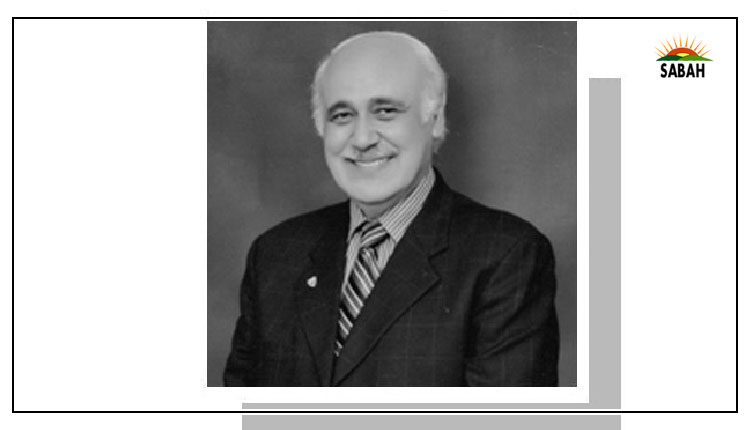Reaching the stars …..F.S. Aijazuddin
THE launch by India of its Chandrayaan-3 rocket and space probe on Aug 23, 2023, and, a few days later, its Aditya L-1 observation mission to the sun, have propelled India into another league. They have separated the men from the boys.
Such programmes take nations decades to develop. The commitment to the US lunar mission was announced by president John F. Kennedy in May 1961. It was fulfilled eight years later in July 1969, when Apollo XI sent two astronauts — Neil Armstrong and ‘Buzz’ Aldrin — to the moon and returned them to earth safely, to be welcomed by Kennedy’s successor (and nemesis) president Richard Nixon.
India’s Chandrayaan’s project was made public by Prime Minister Atal Bihari Vajpayee in August 2003. Twenty years later, another BJP leader, PM Narendra Modi, became the beneficiary of Vajpayee’s farsightedness.
India’s Chandrayaan-3 mission, like that of Apollo XI, will scratch the surface of the moon and conduct valuable scientific experiments there. Apollo XI brought moon rocks back to earth. Fragments were distributed by Nixon to every country in the world. (Incidentally, the one sent to us is allegedly on display in the drawing room of president Yahya Khan’s grandson, in Dubai.)
It is interesting that these futuristic space programmes draw on antiquity for their names — Apollo, Chandrayaan, and Aditya. India’s two missions, though, belong to a space age where the horizon is infinity.
Chandrayaan-3 is the first of its kind to land successfully on the moon’s South Pole. By comparison, Aditya L-1 is even more daring. It will travel 1.5 million kilometers and take four months to reach Lagrange point 1 — the exact spot “where the gravitational forces of two large objects — such as the sun and the earth — cancel each other out, allowing a spacecraft to hover. Once Aditya-L1 reaches this ‘parking spot’, it would be able to orbit the sun at the same rate as the earth”. It can monitor the sun even during an eclipse.
Although Pakistan will never be the direct beneficiary of the scientific data collected by Chandrayaan-3 and Aditya L-1, it could learn from their development outlay. The cost of the Aditya L-1 is reported to be $46 million. By contrast, Pakistan’s external debt stands at $125 billion, with no moon or sun rockets to show for it.
India’s Chandrayaan-3 is on the moon. Its Aditya L-1 will hover around the sun. It is not inconceivable that India may soon launch a space station that will orbit the earth, with its hardware aimed at sites hidden from the naked eye in neighbouring countries. Hopefully, someone in our National Command Authority responsible for protection of our nuclear assets has anticipated such a possibility.
It should remember, though, US president Ronald Reagan’s Strategic Defence Initiative of 1983, to provide the US with a space-based shield that would detect and destroy enemy (ie nuclear) ballistic missiles as soon as they were launched.
The then USSR, determined not to be left behind, tried to match the US. It took a new leader, Mikhail Gorbachev, to admit the idiocy that brought the USSR to the brink of insolvency. The USSR collapsed under the weight of its pretentious, unaffordable ambitions. It conceded defeat. In December 1987, the US and the Soviet Union signed the Intermediate-Range Nuclear Forces Treaty, ending the senseless arms race between the two superpowers.
While India has made the moon its backyard and given a new meaning to solar power, we in Pakistan are still mired in the quicksand of our past policies. The seeds of our discontent lie, for one, in the 1998 policy for New Private Independent Power Projects.
Its preamble read: “Once the restructuring, corporatisation and privatisation of Wapda/KESC’s thermal power generation, power transmission and distribution is complete and Nepra is fully operative, all future investment in power generation, transmission and distribution facilities will become market driven and of no direct concern to GOP. Investors will deal with purchasers, the distribution companies; enter into supply contracts with them, develop their projects under Nepra licence and operate under its oversight.”
It continued: “Competitive tariffs will comprise an energy purchase price and a capacity purchase price with adequate provisions for escalation. The GOP will guarantee that the terms of executed agreements, including payment terms, are maintained.”
The bureaucrats who designed the scheme enjoy protection here or asylum abroad. The beneficiaries of this largesse are still lording it within our country. Meanwhile, our public struggles every month to pay the price for their greed.
It takes money and maturity to understand the fusion of science and poetry inherent in Robert Browning’s inspirational lines: “Ah, but a man’s reach should exceed his grasp, Or what’s a heaven for?”
The writer is an author.
www.fsaijazuddin.pk
Courtesy Dawn, September 7th, 2023












